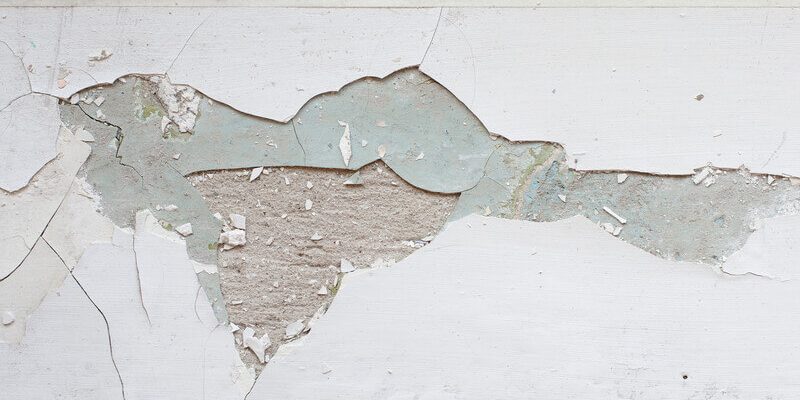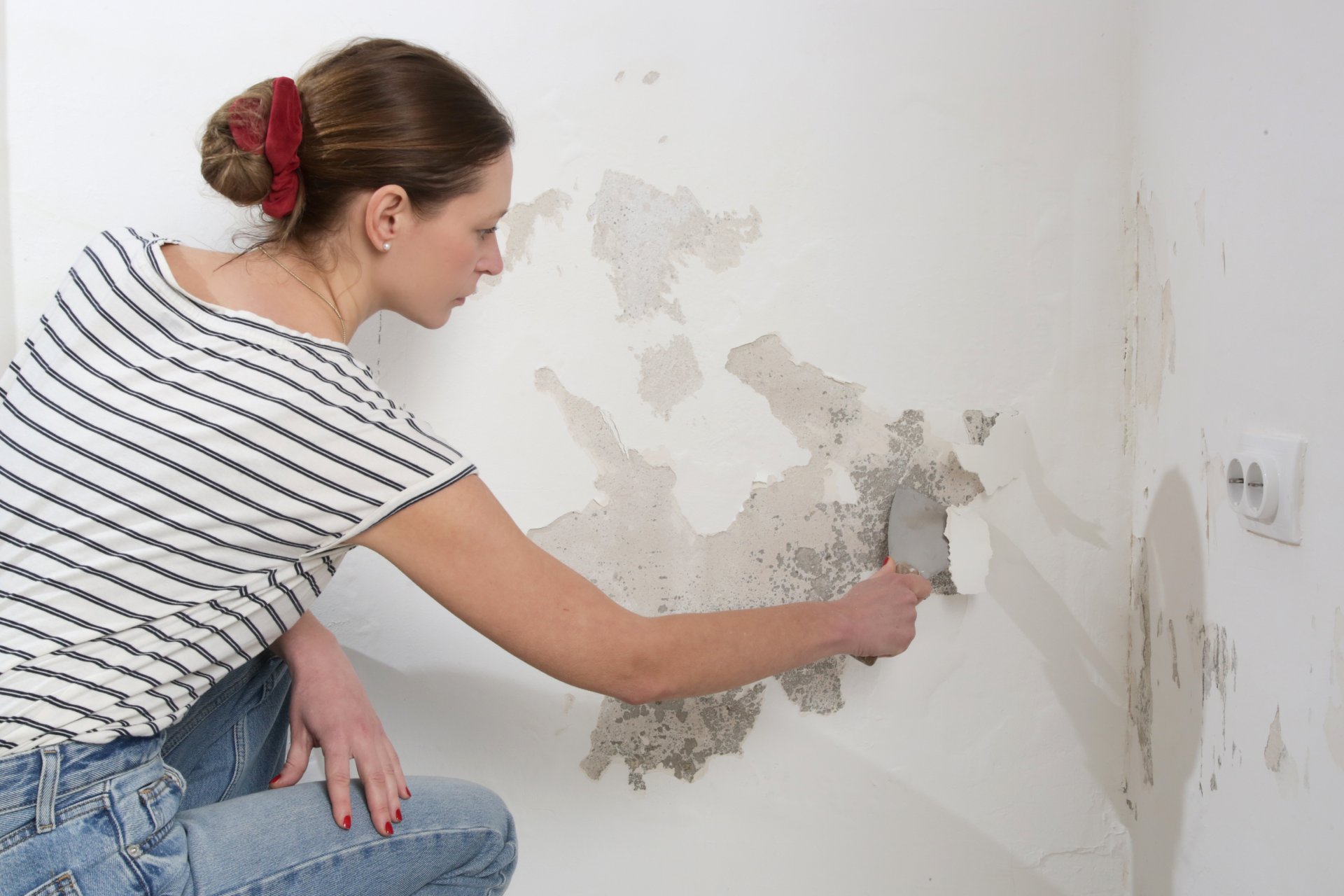For plenty of time now, we have become very knowledgeable about the dangers posed by lead, especially when it is found in things like kid’s toys and, yes, even paints. Some homes may still have lead paint covering their walls, and some people may want to seal that away so that they have a little more peace of mind regarding the health risks posed by lead.
How do professional painters handle lead paint, then? Is it easy to simply paint over lead-based paint, or is there more of a specific process that painting contractors in Dallas would need to go through first? Let’s learn all about how lead paint is handled by the professionals.
Lead Paint Can Still Pose a Health Hazard
Everyone should know that lead-based paint is dangerous and can be harmful to you if you’re exposed to it without the proper protection. This is why, when professional painters work in an environment where they know lead-based paint is present, they will be wearing their protective gear.
Eye protection, coveralls, respirators, and making sure everyone has gloves are a few of the ways painters make sure they are protected when working with lead paint. If you think you are going to be exposed to lead paint, make sure you have the proper PPE (personal protective equipment) on when you are in the work area.
Getting Into It
So, back to the original question: can you simply paint over lead based paint? The answer is that it’s not that simple.
You won’t be able to use any old type of paint for this job. What will actually be happening is a technique known by painters as encapsulation, which is a way of safely painting over lead based paint, depending on a few conditions.
Encapsulation: When is it Not a Good Idea?
Sometimes, encapsulation is actually not the best idea. This is entirely dependent on the condition of the old paint job, because sometimes the paint used for encapsulation will end up flaking and peeling, bringing the old lead based paint with it.
If you’re unsure of whether your old paint is in a condition that could be helped by encapsulation, seek a consultation with a professional before you do any work. That’s mostly for your own safety and the safety of others who live in your home.
You should also keep in mind that encapsulation for lead based paint won’t work at all for the following common types of surfaces.
- Surfaces that are frequently walked and stepped on
- Surfaces that have seen bad deterioration
If you are facing one of these surfaces or your old paint on the wall is in bad condition, you will want to consult with a renovator who is certified with the EPA to get the job done the right (and safe) way.
Doing the Job
First off, when you begin painting over the old lead-based paint, you should keep in mind that the whole process is only going to have any effect if the finish on the old (lead-based) paint job is still in good shape. If it is peeling or chipped, this process isn’t going to work properly.
If the area was good to go, then you should still keep in mind that, even after encapsulation is finished, you should still keep an eye on the area for a while to make sure none of the old paint jobs cracks through. Normally, a good encapsulation job will last you 10 years or more if it was done right.
Keeping a close eye on it will let you know if it begins to peel or flake, and if it does, you will want to take steps to correct the problem as soon as possible.
Which Paints Are Good For the Job?

If you choose to go the DIY (do it yourself) route for this task, then you will need to know which paints are appropriate to use over lead paint.
After all, the hard work that goes into the encapsulation process is going to be for nothing if you buy the wrong paints for the job.
There are three types of paints that you should keep in mind for the job, as these three are great for encapsulation.
- Epoxy paints
- Polymer paints
- Cement or materials similar to cement
If you’re planning to do this job yourself instead of hire professionals, then you should go with an epoxy-based or polymer-based paint for encapsulation.
These are handier and faster for this particular task, as they do not require you to have to mix anything.
Make sure you use them only after reading up on their manufacturer’s recommendations carefully and make sure you have all the right PPE like gloves, eye protection, and your respirator before you begin the job.
Remember, you do not want to work in an environment exposed to lead-based paint without ensuring you are properly protected, as it is not good for your health.
To properly do this job, you should make sure you run by the hardware store and pick up a few of these items for painting if you don’t already have some of these lying around in your garage somewhere.
- A paintbrush
- A paint roller
- A spray gun for paint
Any of these will help you get the job of encapsulation done, so you can rest easier knowing that old lead-based paint job is effectively sealed off.
What Health Hazards Are Posed by Lead?
We have known about some of the dangers posed by lead for quite a while now, as it was commonly used in household paints and even toys for kids to play with. Lead is known to cause problems in behavior, including learning disabilities. In some, it has been the cause of seizures.
If someone suffers from lead poisoning, they could quickly begin exhibiting symptoms such as bad headaches or migraines, nausea and pains in their stomach, lethargy and fatigue, and extreme irritability. If someone has been exposed for too long without the proper PPE and begins exhibiting any of these symptoms, you should make sure they are seen by a health professional as soon as possible.
This is why it is so important to stay on top of checking the condition of old lead based paint jobs and taking action as soon as possible if you note any peeling off, chipping, or flaking bits of paint.
This is also why it is so important for painters and anyone else working in the affected area to make sure they are wearing the proper PPE for the job, so they can stay as safe as possible.
Frequently Asked Questions
Got any more questions about encapsulation or lead based paint in general? Dive into some of these questions asked frequently by people dealing with a lead paint problem in their own homes.
Should I hire a professional team or paint over the lead paint myself?
If you have the budget for it, you should really hire a professional painting crew to handle this task for you if you’ve never dealt with painting over lead paint before. It is better for your health this way, especially if you don’t have the proper PPE or painting materials to get the job done safely. Professional painters will have everything needed with them to safely encapsulate the lead paint in your home.
Does simply painting over lead paint make it safe?
Generally, if the lead based paint job in your home is still in good shape, it shouldn’t be harmful to you or your family. If you know your home has lead based paint in it, however (or if it was built before 1978 when lead based paint was outlawed) then you will need to stay on top of checking on it.
Look for chips and flaking paint, or paint that is beginning to peel away. When you see these signs, you will know that it is time to act.
Can you seal lead paint by painting over it?
The lead paint will not be resealed if the surface or paint is damaged, chipped, peeling, or bubbling. The entire toxins present behind the layers will still find their ways through the topcoat, and these tend to be dangerous.
How do you get lead paint ready for painting?
Make sure sanding or scraping of your lead paint is done wet if at all needed. You will reduce dust when you spray the section with water before you sand or scrape.
Cover any electrical outlets and connection switched off before you spray near them. Smooth out rough areas using a medium or coarse-grid sanding sponge or paper.
How can chipped lead paint be sealed?
Just apply paint on the sealer on the piece to close in the lead paint and prevent it from any further chipping. I can recommend the liquid sealer, although I’ve also used the spray sealer. I didn’t observe a change in the color of the door after I applied 2 coats.
How do you handle lead-based paint?
Firstly, we wet the area using and water before we commence sanding and scraping. We then prime the area, repaint, and clean up aggressively. Use a new surface to cover the wall to limit exposure to lead paint. This process is referred to as enclosure.
Is a DIY lead paint removal possible?
There are different methods to lead paint removal, which include wet hand-scraping or brushing with liquid paint removers. When you hire painting contractors near you, they may prefer the damp sand surfaces.
They must make use of an electric sander, which is very efficient due to a filtered vacuum that contains its high-efficiency particulate air (HEPA).
What should I expect if you sand lead paint?
There is no health issue reported from the use of lead-based paint unless the paint is flaking, chipping, sanded, or crushed into dust. Poisoning and other health issues may occur when exposed too long to lead. It may lead to impaired brain and nervous system functions, and anemia,
Is lead present in all painting?
The only paint that contains lead is lead-based paint. You may only find lead in paint used in marking roads because it has been banned since 1978 from household paints.
Do you paint on lead paint on furniture?
The lead paint will not be resealed if the surface or paint is damaged, chipped, peeling, or bubbling. The entire toxins present behind the layers will still find their ways through the topcoat, and these tend to be dangerous.
Is it possible to absorb lead through the skin?
Lead can only be absorbed into your body through ingestion (eating) or inhalation (breathing). There is no way to absorb lead through your skin except for some organic lead compounds not confirmed as standard, such as tetraethyl lead.
What paint will adhere to lead?
Plantain oil is the only thing that will adhere properly to lead for the long term, and you can get it from any good building mercenaries.
Do you seal lead flashing?
The CT1 sealant is only perfect for sealing lead flashing because of a single reason. It is a unique hybrid formula that is applicable to wet walls, including underwater. Cleaning the wall before you apply CT1 lead flashing sealant has many advantages, and we recommend our multi-solve multipurpose solvent for the cleaning.
Covering the Lead Away
You should always try to hire a professional painting crew for this job if you can, for your own safety. If you don’t have the budget for professional painters, however, but do have the materials necessary to get the job done yourself, just make sure you follow some of the safety tips outlined above and wear your PPE anytime you are in the exposed area.
With a little work, as long as you’re using the right type of encapsulation paint and making sure your eyes, nose, and mouth are protected from potentially breathing in lead, then you should be good to go.





